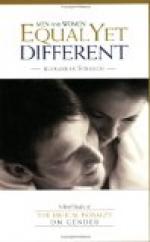Among the personages eminent in this reign was Esther Inglis, who was exceedingly zealous, and industrious withal, in translating and transcribing the Scriptures into various languages, particularly French and Latin. Copies of these she presented to persons of distinction, one of which—a copy of the Psalms, and a rare specimen of calligraphy—she presented to the queen, who graciously accepted it, and subsequently had it deposited in the library of Christ’s Church, Oxford.
She was pronounced by the most exacting critics to be the most accurate chirographist that had been known up to that period; nor has her peer been found since. She excelled even the celebrated Ascham and Davies, both in the number and variety of styles. Her copy of the Book of Proverbs is perhaps her most elaborate work of art, and is a marvel for the ingenious combination of writing, of which there are forty specimens, and fine pen-and-ink drawings. Every chapter, which is embellished both at the beginning and end with beautiful decorations, is written in a different hand, and there are variations of hand in some of the chapters. The book is entitled “Les Proverbes de Solomon, escrites in diverses sortes des lettres, par Esther Anglois, Francoise: A Lislebourge en Escosse, 1599,” and is dedicated to the Earl of Essex. It is further ornamented by an exquisitely neat representation of the arms of the unfortunate nobleman, with all their quarterings, and by a pen-and-ink likeness of herself.
Several others of her works are carefully preserved in both England and Scotland; and some, as late 1711, were in the possession of her own descendants.
At the age of forty, she married a Scottish gentleman, named Kello, or, as we would spell it in these modern times, Kelly. The issue of this marriage was one son, named Samuel; and it was her grandson, Samuel Kelly, who was in possession of various portions of her works in the last century.
LADY PAKINGTON.
This celebrated lady, who flourished in the latter part of the seventeenth century, was the daughter of Lord Coventry, Keeper of the Great Seal, and the wife of Sir John Pakington. She was justly considered one of the celebrities of her day, and her society sought by the learned divines with whom she was contemporary. She was the well-known author of several works of merit, and the reputed author of others.
Ballard, who has given the world so many sketches of worthy and eminent women, with several other writers of note, claims that it was she who wrote the treatise entitled “The Whole Duty of Man;” and his reasoning is so much to the point, though quaint, that we simply append what he says of her, with his apt quotations from her writings, as a sufficiently clear delineation of the character and talents of this worthy woman. He writes:




